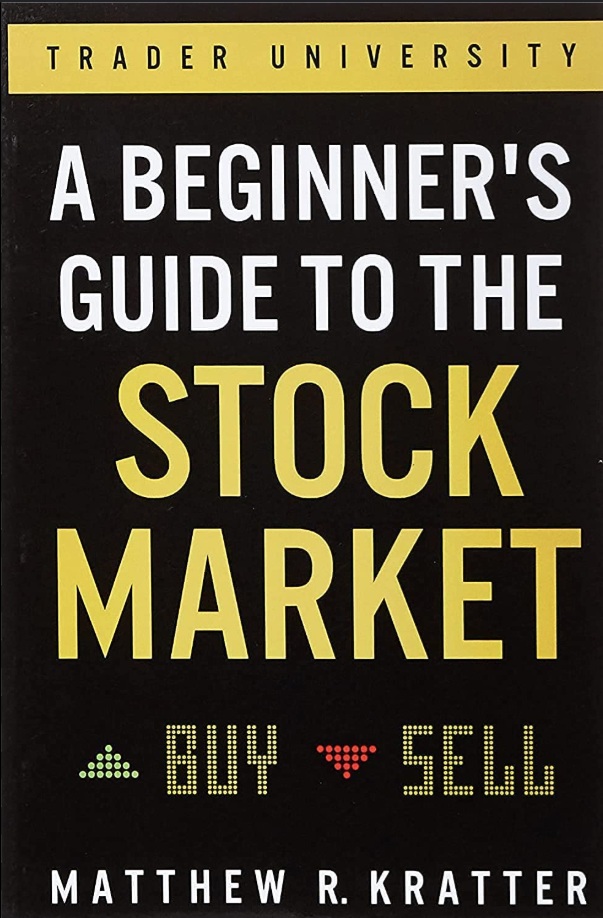Everything You Need to Start Making Money Today – Or So It Promises
🎯 Introduction: A Quick Start for the Curious Investor
Matthew Kratter’s A Beginner’s Guide to the Stock Market has become a go-to book for investing newbies looking for a fast, digestible entry point into the world of stocks. Praised for its brevity and clarity, it promises to arm you with “everything you need to start making money today.”
It’s a bold claim for a book barely 100 pages long — and therein lies both its appeal and its limitation.
Kratter, a former hedge fund trader, brings Wall Street experience to Main Street readers. But while the book succeeds in delivering a simplified overview, it stumbles when it tries to be both a foundational guide and a motivational shortcut to wealth.
🧠 Core Philosophy: Get in the Game
The book’s primary message is simple: The stock market is not as intimidating as it seems, and you can start investing right now with just a little knowledge. Kratter demystifies stocks, ETFs, and brokerages while emphasizing long-term wealth-building over day trading.
There’s a welcome urgency to his message — don’t wait, don’t overthink it, start building wealth now. But that sense of immediacy occasionally veers into oversimplification, with advice that may encourage overconfidence more than informed decision-making.
💼 What’s Inside: From Zero to Robinhood
Kratter structures the book in short, punchy chapters that answer the most basic questions a beginner might have:
⦁ What is a stock?
⦁ How do you open a brokerage account?
⦁ What is an ETF?
⦁ How do dividends work?
He sprinkles in definitions, quick tips, and some of his own opinions (he’s not shy about disliking mutual funds, for example). It’s clear the book is aimed at someone who has never invested before and may be overwhelmed by technical jargon or traditional finance books.
“Don’t worry if you feel confused at first. Just keep reading. You will get it.”
This encouragement is helpful — but the book often trades depth for speed.
🗺️ What Readers Love (Based on Positive Reviews)
✅ 1. Extremely Accessible
Kratter’s greatest strength is his simplicity. There’s no jargon, no intimidating math, and no long-winded economic theory. Beginners feel welcomed and empowered. Many readers report that this was the first book that actually made investing seem doable.
✅ 2. Action-Oriented Tone
The book doesn’t just explain concepts — it tells you what to do. Kratter names specific brokerages, outlines strategies like dollar-cost averaging, and even advises on avoiding common beginner mistakes.
✅ 3. Budget-Friendly
At under $10 and a two-hour read, it’s an attractive starting point for anyone with limited time or money. The low barrier to entry matches its intended audience perfectly.
❌ Where It Falls Short (Based on Critical Reviews)
❌ 1. Too Shallow for Serious Understanding
While the simplicity is a virtue, it’s also the book’s biggest drawback. Important concepts — like risk tolerance, portfolio construction, rebalancing, and tax implications — are either brushed over or ignored.
For example, Kratter briefly mentions index funds but fails to explore how asset allocation changes over time or what role bonds might play. Readers could walk away with confidence but not necessarily competence.
❌ 2. Dubious Claims and Hype
Kratter occasionally makes sweeping statements such as “this strategy is a guaranteed way to make money” or implies that starting today can lead to fast results. This contradicts his otherwise sound message of long-term investing.
“If you follow these steps, you can start making money in the market today.”
That’s inspiring — but also misleading. It reinforces the myth that investing is a quick win, rather than a decades-long discipline.
❌ 3. Outdated or Oversimplified Brokerage Advice
Kratter names specific platforms like Robinhood, which have become controversial due to their gamified trading approach. While his intention is to offer practical tools, he doesn’t fully address the risks of zero-commission trading apps, especially for novices prone to overtrading.
🔍 Deeper Analysis: Is This Really “Everything You Need”?
Despite its confident subtitle, this book is not everything you need to start investing — let alone succeed long term. What it offers is a motivational nudge, not a road map.
There’s little to no discussion of:
⦁ Market cycles or volatility
⦁ Inflation and purchasing power
⦁ Diversification across asset classes or geographies
⦁ Behavioral pitfalls like panic selling or FOMO
⦁ How to handle investing during a downturn
More importantly, Kratter doesn’t differentiate between investing and speculating. While he encourages long-term holding, he also introduces momentum trading and options in later chapters — both of which are risky for beginners.
This mix of basic advice and advanced tactics, without sufficient caution, could confuse readers about what kind of investor they’re supposed to be.
📖 Comparison: Better or Worse Than Other Beginner Books?
Compared to classics like The Little Book of Common Sense Investing (Bogle) or The Intelligent Investor (Graham), Kratter’s book is more digestible but far less substantive. It’s a good gateway, but not a standalone foundation.
If Bogle’s work is the gospel of passive investing and long-term patience, Kratter’s is more of a pep talk — inspiring, but needing supplementation.
⭐ Final Verdict: ★★★☆☆ (3/5)
A Beginner’s Guide to the Stock Market does exactly what the title implies — but not much more. It’s a fast, easy read for total novices who want to get started with investing and feel intimidated by more comprehensive guides. However, it oversells its promise and underdelivers on depth.
For readers who want a quick orientation before diving deeper into the world of ETFs, financial planning, and risk management, this book can be a helpful stepping stone. But it should be followed up with more rigorous reading.
Who Should Read It:
⦁ Total beginners curious about how the stock market works
⦁ Teens, young adults, or new investors with no finance background
⦁ Those looking for a light, motivational entry point
Who Might Want to Skip It:
⦁ Intermediate or advanced investors
⦁ Readers seeking detailed investment strategy
⦁ Those looking for evidence-backed or academic insight
“Read it to get started — but don’t stop there. This is the on-ramp, not the highway.”




